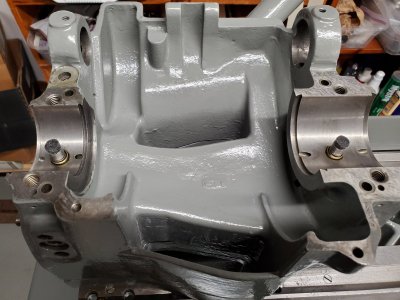- Joined
- May 2, 2015
- Messages
- 104
Looking for some expert advice / pictures / diagrams...anything.
Quick synopsis: Unknown previous owner / "rebuilder" clearly installed the spindle bearings incorrectly and did not line up the brass tubes in the headstock with the holes in the bronze bearings. The brass tubes were pushed down flush. I was able to pull them up to the correct height without them rotating. At the correct height - they block the transfer holes from the oil cups. It appears that they were at some point rotated and almost completely blocked these holes.
Fast forward and I was able to extract them completely out. The bottom is cut at a 45deg angle - the long side was what blocked the oil passage.
So - what are the actual correct brass tubes supposed to look like and how are they oriented?
I have new brass tubing inbound tomorrow.
I don't know if these are original or some hack fix that someone cobbled together.
Any help - picture, diagram, drawing, link etc - anything would help.
The correct nomenclature is "Oiler Tube PT522R1" (2 reqd)
TIA
Quick synopsis: Unknown previous owner / "rebuilder" clearly installed the spindle bearings incorrectly and did not line up the brass tubes in the headstock with the holes in the bronze bearings. The brass tubes were pushed down flush. I was able to pull them up to the correct height without them rotating. At the correct height - they block the transfer holes from the oil cups. It appears that they were at some point rotated and almost completely blocked these holes.
Fast forward and I was able to extract them completely out. The bottom is cut at a 45deg angle - the long side was what blocked the oil passage.
So - what are the actual correct brass tubes supposed to look like and how are they oriented?
I have new brass tubing inbound tomorrow.
I don't know if these are original or some hack fix that someone cobbled together.
Any help - picture, diagram, drawing, link etc - anything would help.
The correct nomenclature is "Oiler Tube PT522R1" (2 reqd)
TIA




